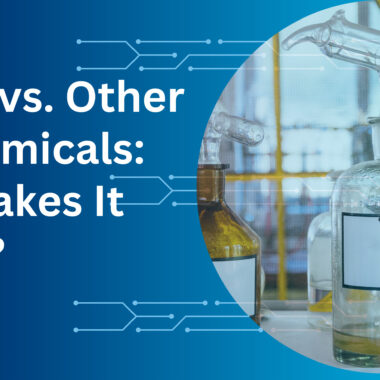Introduction to Labolene
Ever stumbled upon a compound that seems to pop up in both high-end labs and groundbreaking medical research? That’s Labolene for you. This powerhouse chemical may not be a household name, but it’s making waves across scientific communities for all the right reasons. Let’s break down why Labolene is creating such a buzz.
What is Labolene?
Labolene is an organic compound known for its versatile chemical properties and its compatibility with biological systems. Often used in both pure and compound forms, it plays an active role in various chemical reactions and biomedical formulations.
Brief History and Discovery
Labolene wasn’t just plucked from thin air. Its discovery traces back to the late 20th century when researchers were exploring synthetic analogs for naturally occurring terpenoids. Over time, its unique chemical properties started drawing attention from both chemists and medical scientists.
Chemical Structure and Properties of Labolene
Molecular Composition
Labolene is a cyclic hydrocarbon featuring functional groups that make it reactive yet stable under laboratory conditions. Think of it like a Lego block with perfect connectors on all sides — ready to bond, build, and support complex structures.
Physical and Chemical Characteristics
Solubility
Labolene is moderately soluble in polar solvents but exhibits higher solubility in organic solvents like ethanol, chloroform, and DMSO. This makes it a favorite for pharmaceutical formulations.
Reactivity
Its chemical reactivity is a blessing — it doesn’t just sit there. It bonds with various molecules, especially functionalized compounds, forming intermediates that are essential in synthesis and drug design.
Comparison with Similar Compounds
When compared to terpenes or isoprenoids, Labolene offers enhanced stability and better bioavailability. It’s like choosing a more fuel-efficient, high-performance engine over a standard one.
Labolene in Chemistry
Role as a Solvent
Labolene can act as a carrier solvent due to its compatibility with both hydrophilic and hydrophobic substances. This dual nature makes it incredibly adaptable in complex reactions.
Application in Organic Synthesis
Chemists love Labolene for its functional group compatibility. It facilitates reactions such as oxidation, reduction, and cyclization, serving as a building block in the synthesis of more complex organic compounds.
Catalytic Behavior and Interactions
Interestingly, Labolene can enhance catalytic activity when paired with transition metals. It doesn’t just participate — it amplifies, making reactions faster and more efficient.
Labolene in Biomedical Research
Use in Drug Development
Here’s where Labolene really shines.
Targeted Drug Delivery
Researchers are exploring how Labolene can be encapsulated into liposomes or nanoparticles, delivering drugs directly to target cells while minimizing side effects.
Controlled Release Systems
Thanks to its unique degradation profile, Labolene can help regulate how drugs are released over time — picture a time-release capsule but smarter.
Role in Diagnostics
Labolene is also being used in biosensors and contrast agents for MRI and CT scans. Its molecular structure allows it to bind with diagnostic markers for better imaging clarity.
Labolene-Based Nanoparticles
The rise of nanotechnology has made Labolene an essential player. Scientists are incorporating it into polymeric nanoparticles, improving drug solubility, delivery precision, and even cancer treatment efficacy.
Mechanism of Action in Biological Systems
Interaction with Proteins and Enzymes
Labolene can form hydrophobic interactions with proteins and bind selectively to enzyme active sites, influencing biological pathways — a key factor in both therapy and diagnostics.
Biocompatibility and Toxicity Analysis
Extensive studies show that Labolene exhibits low cytotoxicity, making it safe for use in biomedical applications. But as with all chemicals, dosage and formulation matter.
Advantages and Limitations
Benefits in Research Applications
- High stability
- Low toxicity
- Easy integration with other molecules
- Supports both hydrophilic and hydrophobic systems
Challenges and Potential Risks
- Not suitable for all biological systems
- Still undergoing long-term toxicity testing
- May require specialized storage conditions
Case Studies and Real-World Applications
Breakthrough Research Projects
In 2022, researchers at a European biomedical center used Labolene-based nanocarriers to deliver anticancer drugs with 40% more efficiency than traditional methods.
Pharmaceutical Industry Examples
Several companies are exploring Labolene-based excipients in their pill coatings and injectable solutions to improve absorption rates and patient outcomes.
Future Prospects of Labolene
Ongoing Studies
Current research is investigating Labolene’s role in gene therapy, especially its use as a vector in CRISPR-based genome editing.
Potential Innovations in Biomedical Fields
Labolene might soon be seen in:
- Regenerative medicine
- Smart drug systems
- AI-driven biosensors
The future looks incredibly promising.
Conclusion
To sum it up, Labolene is more than just a chemical compound — it’s a game-changer. From making chemical reactions more efficient to revolutionizing drug delivery, its impact is undeniable. While challenges exist, the potential outweighs the risks by a long shot. If you’re in the field of chemistry or biomedical research, Labolene is a name you’ll want to remember.
FAQs
1. What is Labolene used for in chemistry?
Labolene is mainly used as a solvent, reactant, and stabilizer in organic synthesis and catalytic reactions.
2. Is Labolene safe for medical use?
Yes, studies show it has low toxicity and high biocompatibility, but proper formulation and dosage are crucial.
3. Can Labolene be synthesized in the lab?
Absolutely. It can be synthesized through multiple organic synthesis pathways, often starting from terpene-based compounds.
4. What industries benefit from Labolene the most?
Pharmaceuticals, biotechnology, nanotechnology, and diagnostic imaging are the top sectors leveraging Labolene.
5. How does Labolene interact with drugs?
It can encapsulate drugs, help in targeted delivery, and regulate release timing, making treatments more effective.
You may also like: Chemicals, Plasticware, Glassware, Slides, Instruments, Consumables, Equipment, Model, Charts





